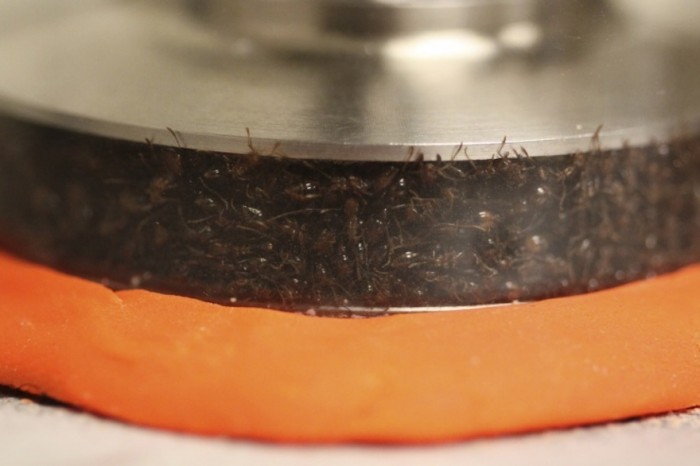
Builders, makers, and creatives can look forward to a future in which materials have the ability to heal themselves. Imagine a world in which cracked walls are able to put themselves back together or a tear in your favourite dress doesn’t require stitching to fix. While these may sound like scenes out of a sci-fi movie, scientists at the Georgia Institute of Technology are working to harness the simultaneously liquid and solid quality of the red ant in order to develop new kinds of innovations.
“If you cut a dinner roll with a knife, you’re going to end up with two pieces of bread,” says David Hu, an associate professor in the George W. Woodruff School of Mechanical Engineering. “But if you cut through a pile of ants, they’ll simply let the knife go through, then reform on the other side. They’re like liquid metal – just like that scene in the Terminator movie.”
Ants have the amazing ability to change shape as one mass, adapting to changes in the environment. For instance, an army of ants is able to build bridges and rafts using their bodies.
To study the ants’ ability to “shape-shift”, the researchers put thousands of ants into a rheometer, a machine used to test the mechanical properties of materials such as food, hand cream or melted plastic.
It was found that the ants exist in both a liquid and a solid state. “Ants seem to have an on/off switch in that they let go for sufficiently large applied forces,” says HU. “Despite wanting to be together, they let go and behave like a fluid to prevent getting injured or killed.”
Further, they are able to link up, flatten, and spring back into shape very quickly. This viscoelastic quality means the ants resist any deformation. The can flow like a liquid when they need to and reform after it has been deformed.
If a material with this quality could be produced it would mean the end to shattering glass and toppling buildings.
While the construction of this material is a long way away, observing the mechanical properties of these insects will give researchers more insight into how it can be done.






